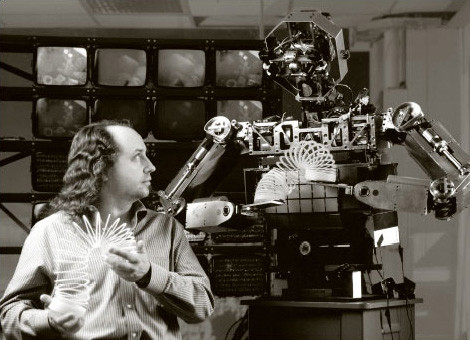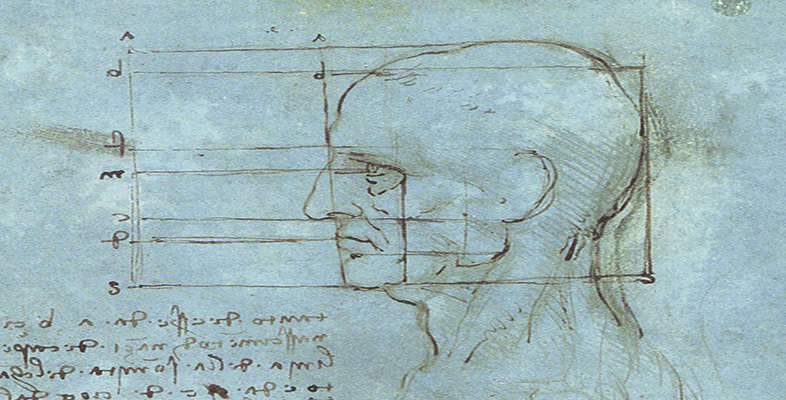2.2 What it's like
Suppose you have just had a dental procedure under general anaesthetic and are coming round. You are aware of a dazzling light above you and of a muffled voice echoing in your ears. There is sickness in your stomach and a sharp metallic taste in your mouth. You feel a moment of panic as you struggle to work out what has happened. Moving your head, you recognise the dentist's face and realise that he is speaking your name and asking if you want a glass of water. Your remember where you are, sit up shakily and take the glass.
Think about what happened as you regained consciousness. Various bodily processes resumed. Your sense organs started functioning again, registering stimuli and sending signals to your brain. Your brain also resumed its normal activity, processing these incoming signals and responding to them. Various brain centres became active, including ones devoted to visual processing, face recognition, emotion, memory, language and conceptualised thought. Signals flew back and forth from region to region and out to your organs and limbs. But this wasn't all that happened when you came round. You also started having conscious experiences – experiences with a certain feel to them. Imagine having the various experiences I described – seeing a dazzling light above you, hearing a muffled voice, having a metallic taste in your mouth, feeling a stab of panic and so on. Focus on what it is like to have those experiences – on what it feels like from the inside. Each of them, like every other experience, has its own character, which is instantly recognisable but very difficult to describe.
Philosophers use a variety of terms for this aspect of experience. You will find them speaking of an experience's ‘qualitative feel’, ‘phenomenal feel’, ‘phenomenal character’, ‘phenomenal content’, ‘phenomenology’ (in some contexts), ‘subjective character’, ‘raw feel’, ‘what-it-is-likeness’ and ‘qualia’ (a Latin plural meaning ‘qualities’; the singular is ‘quale’). Some of these terms – ‘qualia’ in particular – often carry theoretical overtones, but at bottom all refer to the same thing: what a given experience feels like from the inside. When contemporary philosophers speak of consciousness it is usually this to which they are referring.
Another way to home in on the phenomenon of consciousness is to contrast conscious mental states with non-conscious ones. Although some philosophers (Descartes for one) have rejected the idea, it is now widely accepted that we are not aware of all of our mental states and processes. This view has been popular among psychologists since at least the nineteenth century, and everyday life provides plenty of evidence for it. Consider driving, for example. One can drive a car, drawing upon one's knowledge of the rules of the road and of the car's controls, without giving any conscious thought to what one is doing. Or think of cases where the solution to a problem pops into one's head some time after one has given up thinking about it consciously. In these cases it seems, some quite complex mental activity must be going on below the surface.
Many writers also hold that non-conscious perception is possible. At first sight this may seem a bizarre claim. How could we see non-consciously? The idea is not as odd as it sounds, however. One way to illustrate this is to think about a robotic system. Consider Cog. Cog is a robot that is being built by the Humanoid Robotics Group at The Massachusetts Institute of Technology, under the direction of Rodney Brooks (Figure 1). Cog has a mechanical body (only the upper part so far), powered by electric motors and controlled by microprocessors similar to those found in personal computers. It also has a visual system, consisting of two head-mounted video cameras and a network of microprocessors for analysing their signals. (I say ‘it’ because the MIT team deny that Cog has a gender.) This gives Cog some basic visual abilities. It can identify faces and other interesting objects, follow moving objects with its eyes and use visual information to guide its hands. But though Cog has a form of vision, no one seriously thinks that it has conscious visual experiences of the sort we have when we look at the world around us. We might say that it has non-conscious vision: it sees things, but its sight does not have any felt quality to it. The MIT team are also working to equip Cog with auditory and tactile sensors, but again no one expects these to provide it with conscious experiences of hearing and touch. (For more information about Cog, see Adams et al., 2000; Brooks et al., 1998; Humanoid Robotics Group, 2004, online.)

There are times when we seem to perceive things in a Cog-like way. Psychologists have shown that it is possible to influence a person's behaviour by means of stimuli that are not consciously perceived (Dixon, 1971). In a typical experiment a word is displayed for a split second, so that the subject has no conscious awareness of seeing it. In subsequent testing, however, the subject makes word associations which are influenced by the word displayed – revealing that they had in fact perceived it at some level. (This is known as subliminal perception.) A similar phenomenon seems to occur frequently in everyday life. When driving or walking along a busy street, we continually fine-tune our movements in response to visual cues of which we are not consciously aware – adjusting speed and direction to compensate for the movements of those around us. We also respond in this way to signals from our own bodies, shifting position to avoid cramp or to protect an injury, yet without consciously noticing any discomfort. In these cases, it seems, our brains are registering information and using it to control our behaviour, yet without generating any conscious perceptions or sensations. There are also pathological conditions that seem to involve non-conscious perception. The most famous of these is blindsight (Weiskrantz, 1986, 1997). People with this condition have normal eyes but have suffered damage to the visual processing areas of their brains, with the result that they seem to be blind in large areas of their visual field. They say – quite sincerely – that they see nothing in these areas. Yet if presented with an object in the blind area and asked to make a random guess as to its location or orientation, these people usually guess correctly – much to their own surprise when subsequently told the results. It seems that they are visually detecting the objects without any of the felt quality of normal vision.
(You may feel that it is twisting words to talk of non-conscious perceptions. Surely, seeing is by definition a conscious experience? This is really a terminological issue, however. If we use the term ‘perception’ in that way, then there are no non-conscious perceptions, just as there are no married bachelors. But it is compatible with this that there are non-conscious mental states that are very like perceptions in the role they play, and calling them ‘non-conscious perceptions’ is a way of emphasising this. Some writers also talk of non-conscious sensations and experiences, and the same goes for those terms.)
These reflections on non-conscious mentality should help to clarify what philosophers mean when they talk about consciousness. Their focus is not on the nature of perceptions, sensations and thoughts as such, but rather on what is special about those perceptions, sensations and thoughts that have a feel to them. What exactly is this feel that conscious experiences have? How does it come about and what is its function? Whatever the answers, the phenomenon is surely tremendously important. As the American philosopher Thomas Nagel (b. 1937) puts it, to say that a creature has conscious experiences is to say that it is like something to be that creature – that it has an inner life (Nagel, 1974). A non-conscious being such as Cog might be able to perform sophisticated tasks, guided by information from its sensors, but without conscious experience it would have no inner life. It might detect colours and sounds, but it would never know what it was like to see a brilliant blue sky or to hear leaves rustling in the breeze. It might register when it was damaged or running low on energy, and take appropriate action, but it would never feel real pain or hunger. It might act like us, but it would be dead inside, without any of the conscious experience that accompanies our activities. Life without consciousness would not be life at all as we know it. Indeed, the philosopher Colin McGinn (b. 1950) suggests that the emergence of consciousness was an event of cosmic significance, analogous to the Big Bang. Just as the Big Bang created the physical universe, so the emergence of consciousness – McGinn calls it the ‘Soft Shudder’ – created a new dimension of mental reality (McGinn, 1999, 15).
Activity 1
Which of the following do you think have conscious experiences in the sense outlined above: apes, dogs, snakes, fish, insects, bacteria, plants, rocks?
Discussion
Here is my answer. I find it hard to doubt that apes and dogs have conscious experiences very much like ours. I am not sure what to say about snakes and fish. I am fairly confident that insects do not have conscious experiences and I am certain that bacteria, plants and rocks do not.
Your intuitions may differ from mine of course. You may believe that all animals, even insects, are conscious. (Indeed, as we shall see, some philosophers think that even rocks have a little bit of consciousness!) You may be right, but I think you should at least consider the possibility that you are wrong. The fact that animals behave like us does not prove that they feel like us too. It would be fairly easy to program Cog to detect when it was damaged and issue sounds resembling cries of pain, but it still would not have any conscious pain sensations. And it is possible that animals are the same.
A note on terminology. We are going to need a standard term to refer to the feel of conscious experience. None of the options is unproblematic: ‘feel’ is ambiguous, ‘qualia’ has theoretical overtones, and ‘what-it-is-likeness’ is cumbersome. I shall use ‘phenomenal character’. Although the term may sound technical, remember that it denotes something quite simple – the phenomenal character of an experience is what it is like to have it. I shall also occasionally speak of an experience's ‘phenomenal properties’; this means the same.
